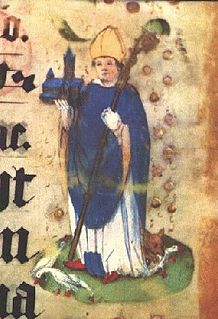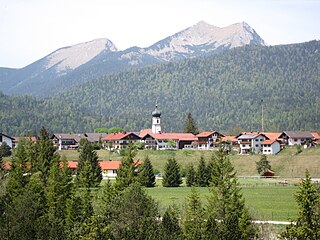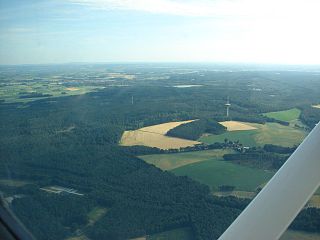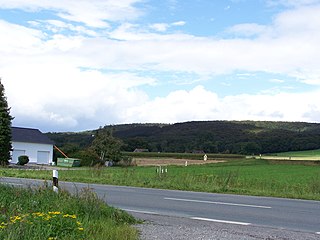

The Coesfelder Berg (152 m) is the westernmost top in the Coesfeld-Darup Hills, a range that is the southwest continuation of the Baumberge hills in the Münsterland in North Germany.

The Baumberge are the highest hills in the natural regions of Münsterland and Kernmünsterland with a maximum height of 187.6 m above sea level (NHN). They are located between Münster and Coesfeld, which is itself close to the southwest edge of the Baumberge.

Germany, officially the Federal Republic of Germany, is a country in Central and Western Europe, lying between the Baltic and North Seas to the north, and the Alps to the south. It borders Denmark to the north, Poland and the Czech Republic to the east, Austria and Switzerland to the south, France to the southwest, and Luxembourg, Belgium and the Netherlands to the west.
The hill, which is east of the town of Coesfeld (Coesfeld county, North Rhine-Westphalia) is a wide ridge that rises between the streams of the Berkel and the Honigbach, descends towards the west relatively steeply from around 140 m above sea level (NN) to just under 80 m above sea level (NN) in the borough of Coesfeld. It is the hausberg for the town.
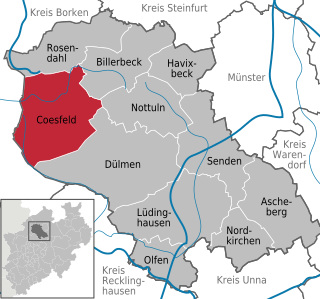
Coesfeld is the capital of the district of Coesfeld in the German state of North Rhine-Westphalia.

North Rhine-Westphalia is a state of Germany.

The Berkel is a river in the Netherlands and Germany. It is a right tributary of the River IJssel.
From the Ludgerirast, the highest point of the hill, there are good views thanks of large parts of the western Münsterland thanks to the treeless summit. It is here that, according to Ludgerus (Ludger or Liudger), the first Bishop of Münster paused whilst out walking and blessed the Münsterland on the evening before his death in Billerbeck. [1] The Dreilindenhöhe, with the three lime trees (Tilia europaea that give it the name [2] ) and a viewing point on the hillside above the town of Coesfeld.
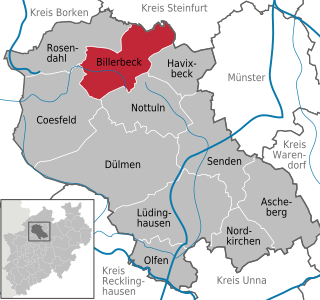
Billerbeck is a municipality in the district of Coesfeld in North Rhine-Westphalia in Germany.
In a scenic side valley south of the Ludgerirast, at a height of 125 metres, is the Benedictine abbey of Gerleve. According to legend, St. Liudger blessed the Bishopric of Münster, that he had founded, from the highest point of the hill on the evening before his death. This is commemorated by a monument erected in 1934 by Brother Dominikus Zwernemann (1901-1983) of Gerleve Abbey.

Gerleve Abbey is a monastery of the Benedictine Order situated between Coesfeld and Billerbeck in Westphalia, in Germany.



